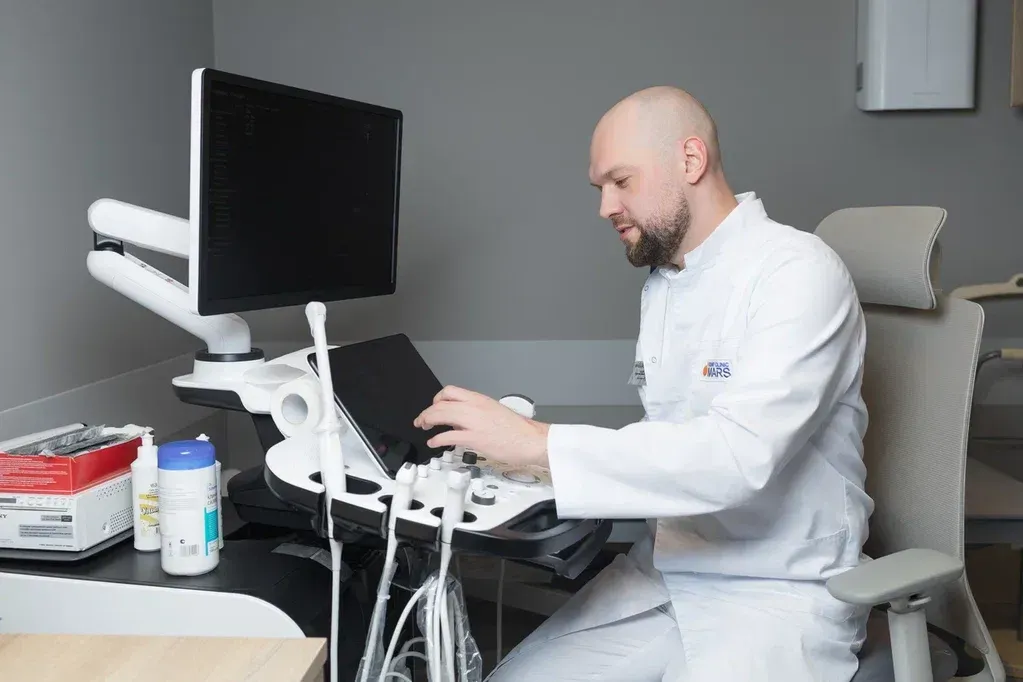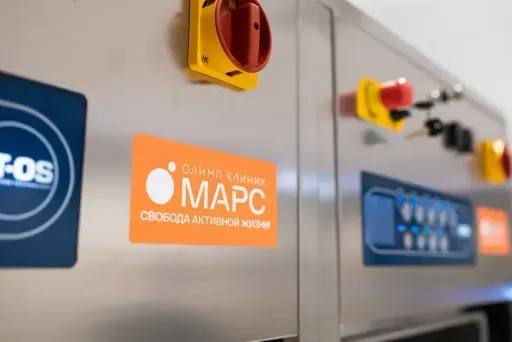Kidney and bladder stones
Solid formations consisting of mineral and organic substances precipitating from urine. They can form in the kidneys, ureters, and bladder, causing urinary disorders, pain, and inflammation.

Urolithiasis is one of the most common urological pathologies found in men and women of different ages. Stones are formed due to metabolic disorders, which causes salts and minerals to precipitate and gradually crystallize. Depending on the composition, oxalate, phosphate, urate and mixed stones are distinguished. They can be small (up to 3 mm) or reach large sizes (centimeters or more), completely blocking the urinary tract. Most often, stones form in the kidneys, but they can descend into the ureter and bladder. In some cases, concretions form directly in the bladder due to stagnation of urine or infections. The symptoms vary depending on the size of the stones and their location.
Causes
Metabolic disorders of calcium, phosphorus, and uric acid.
Genetic predisposition.
Urinary retention and stagnant processes in the bladder.
Urinary tract infections.
Gout, abuse of meat products and legumes.
Insufficient fluid intake.
Physical inactivity, lack of physical activity.
Malfunction of the thyroid and parathyroid glands.
An overabundance of vitamin D in the body.
Drinking water with a high content of mineral salts.
The abuse of spicy, sour, and salty foods.
Inflammatory diseases of the urinary system.
Symptoms
Lower back pain that increases with movement.
Attacks of renal colic (acute spastic pain).
Blood in the urine (hematuria).
Frequent urination, accompanied by pain.
Burning sensation and pain when urinating.
Nausea and vomiting with renal colic.
An increase in body temperature with the addition of inflammatory processes.
The feeling of incomplete emptying of the bladder.
Excretion of sand or small stones in the urine.
After-effects
One of the most dangerous complications is renal colic, which occurs when the ureter is blocked by a large stone. The condition requires immediate medical attention. Prolonged presence of stones in the urinary tract provokes inflammatory processes such as pyelonephritis (suppuration of the kidney) and cystitis. In some cases, stones can completely block the outflow of urine, causing hydronephrosis. With prolonged course, urolithiasis can cause kidney failure.
Лечение

Conservative treatment
With small stones (up to 5 mm), medical treatment is possible, aimed at their dissolution and elimination. For this purpose, drugs that regulate the acid-base balance of urine, diuretics (diuretics), antispasmodics, and anti-inflammatory drugs are used. A diet must be prescribed: with oxalate stones, foods with a high content of oxalic acid (spinach, sorrel, chocolate) are limited, with urate stones, consumption of meat and legumes is reduced, and with phosphate stones, dairy products are excluded. It is recommended to drink plenty of water (at least 2-3 liters of water per day) to reduce the concentration of salts in the urine. Additionally, physiotherapy procedures are used.

Surgical treatment
Surgical intervention is required in cases where the stones reach large sizes, cause persistent pain, lead to blockage of the urinary tract or the development of complications. Modern methods make it possible to minimize the traumatic nature of the operation. One of the most common methods is remote lithotripsy, in which stones are crushed using shock wave energy, after which their fragments are removed naturally. If lithotripsy proves ineffective, endoscopic removal of stones through natural pathways is used: urethra, ureters or percutaneous nephrolithotomy.
Schedule a visit to the clinic
How to reach
Moscow, 1st Yamskogo Polya Street, 15
Mon–Sun Around the clock
+7 495 255-50-03
How to get
From the Belorusskaya metro station of the Zamoskvoretskaya line - exit 4 After exiting the subway, walk through the pedestrian tunnel and climb the stairs. Move towards the railway tracks, go down the stairs immediately after them and walk along the house, then turn right onto 1st Yamskoye Pole Street. At the turn to 3rd Yamsky Pole Street, cross the road at the pedestrian crossing and continue along 1st Yamsky Field Street, after a few buildings on the left you will see Olympus Clinic MARS.
Travel time
9 minutes
Landmark
Olympus Clinic MARS sign
How to get
From the Belorusskaya metro station of the Ring line - exit 2. After exiting the subway, turn left and walk to the pedestrian crossing. Cross the road through two pedestrian crossings and move along the Tverskoy overpass. Go down the stairs immediately after the railway tracks, walk along the house, then turn right onto 1st Yamskoye Pole Street. At the turn to 3rd Yamsky Pole Street, cross the road at the pedestrian crossing and continue along 1st Yamsky Field Street, after a few buildings on the left you will see Olympus Clinic MARS
Travel time
11 minutes
Landmark
Olympus Clinic MARS sign


